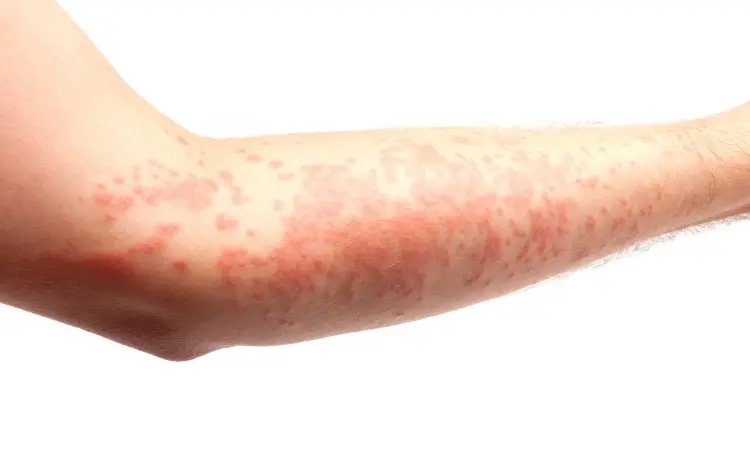- Home
- Medical news & Guidelines
- Anesthesiology
- Cardiology and CTVS
- Critical Care
- Dentistry
- Dermatology
- Diabetes and Endocrinology
- ENT
- Gastroenterology
- Medicine
- Nephrology
- Neurology
- Obstretics-Gynaecology
- Oncology
- Ophthalmology
- Orthopaedics
- Pediatrics-Neonatology
- Psychiatry
- Pulmonology
- Radiology
- Surgery
- Urology
- Laboratory Medicine
- Diet
- Nursing
- Paramedical
- Physiotherapy
- Health news
- Fact Check
- Bone Health Fact Check
- Brain Health Fact Check
- Cancer Related Fact Check
- Child Care Fact Check
- Dental and oral health fact check
- Diabetes and metabolic health fact check
- Diet and Nutrition Fact Check
- Eye and ENT Care Fact Check
- Fitness fact check
- Gut health fact check
- Heart health fact check
- Kidney health fact check
- Medical education fact check
- Men's health fact check
- Respiratory fact check
- Skin and hair care fact check
- Vaccine and Immunization fact check
- Women's health fact check
- AYUSH
- State News
- Andaman and Nicobar Islands
- Andhra Pradesh
- Arunachal Pradesh
- Assam
- Bihar
- Chandigarh
- Chattisgarh
- Dadra and Nagar Haveli
- Daman and Diu
- Delhi
- Goa
- Gujarat
- Haryana
- Himachal Pradesh
- Jammu & Kashmir
- Jharkhand
- Karnataka
- Kerala
- Ladakh
- Lakshadweep
- Madhya Pradesh
- Maharashtra
- Manipur
- Meghalaya
- Mizoram
- Nagaland
- Odisha
- Puducherry
- Punjab
- Rajasthan
- Sikkim
- Tamil Nadu
- Telangana
- Tripura
- Uttar Pradesh
- Uttrakhand
- West Bengal
- Medical Education
- Industry
Antibiotics use strongly linked with SJ Syndrome and Toxic Epidermal Necrolysis, sulfonamides worst offenders

Antibiotics use strongly linked with SJ Syndrome and Toxic Epidermal Necrolysis, sulfonamides worst offenders suggests a new study published in the JAMA Dermatology
Antibiotics are an important risk for Stevens-Johnson syndrome and toxic epidermal necrolysis (SJS/TEN), which are the most severe types of drug hypersensitivity reaction with a mortality rate up to 50%. To our knowledge, no global systematic review has described antibiotic-associated SJS/TEN.
A study was conducted to evaluate the prevalence of antibiotics associated with SJS/TEN worldwide.
The MEDLINE and Embase databases were searched for experimental and observational studies that described SJS/TEN risks since database inception to February 22, 2022.
Study Included studies adequately described SJS/TEN origins and specified the antibiotics associated with SJS/TEN. Two reviewers (E.Y.L. and C.K.) independently selected the studies, extracted the data, and assessed the risk of bias. A meta-analysis using a random-effects model was performed in the studies that described patient-level associations. Subgroup analyses were performed to explore the heterogeneity. The risk of bias was assessed using the Joanna Briggs Institute checklist, and the certainty of evidence was rated using the GRADE (Grading of Recommendations Assessment, Development and Evaluation) approach. Prevalence of antibiotic-associated SJS/TEN was presented as pooled proportions with 95% CIs.
Results
• Among the 64 studies included in the systematic review, there were 38 studies that described patient-level associations; the meta-analysis included these 38 studies with 2917 patients to determine the prevalence of single antibiotics associated with SJS/TEN.
• The pooled proportion of antibiotics associated with SJS/TEN was 28% , with moderate certainty of evidence.
• Among antibiotic-associated SJS/TEN, the sulfonamide class was associated with 32% of cases, followed by penicillins , cephalosporins, fluoroquinolones, and macrolides
• There was a statistically significant heterogeneity in the meta-analysis, which could be partially explained in the subgroup analysis by continents.
• The overall risk of bias was low using the Joanna Briggs Institute checklist for case series.
In this systematic review and meta-analysis of all case series, antibiotics were associated with more than one-quarter of SJS/TEN cases described worldwide, and sulfonamide antibiotics remained the most important association. These findings highlight the importance of antibiotic stewardship, clinician education and awareness, and weighing the risk-benefit assessment of antibiotic choice and duration.
Reference:
Lee EY, Knox C, Phillips EJ. Worldwide Prevalence of Antibiotic-Associated Stevens-Johnson Syndrome and Toxic Epidermal Necrolysis: A Systematic Review and Meta-analysis. JAMA Dermatol. Published online February 15, 2023. doi:10.1001/jamadermatol.2022.6378
Keywords:
JAMA Dermatology, Antibiotics use, strongly, linked, SJ Syndrome, Toxic Epidermal Necrolysis, sulfonamide, offenders, Lee EY, Knox C, Phillips EJ
Dr. Shravani Dali has completed her BDS from Pravara institute of medical sciences, loni. Following which she extensively worked in the healthcare sector for 2+ years. She has been actively involved in writing blogs in field of health and wellness. Currently she is pursuing her Masters of public health-health administration from Tata institute of social sciences. She can be contacted at editorial@medicaldialogues.in.
Dr Kamal Kant Kohli-MBBS, DTCD- a chest specialist with more than 30 years of practice and a flair for writing clinical articles, Dr Kamal Kant Kohli joined Medical Dialogues as a Chief Editor of Medical News. Besides writing articles, as an editor, he proofreads and verifies all the medical content published on Medical Dialogues including those coming from journals, studies,medical conferences,guidelines etc. Email: drkohli@medicaldialogues.in. Contact no. 011-43720751


